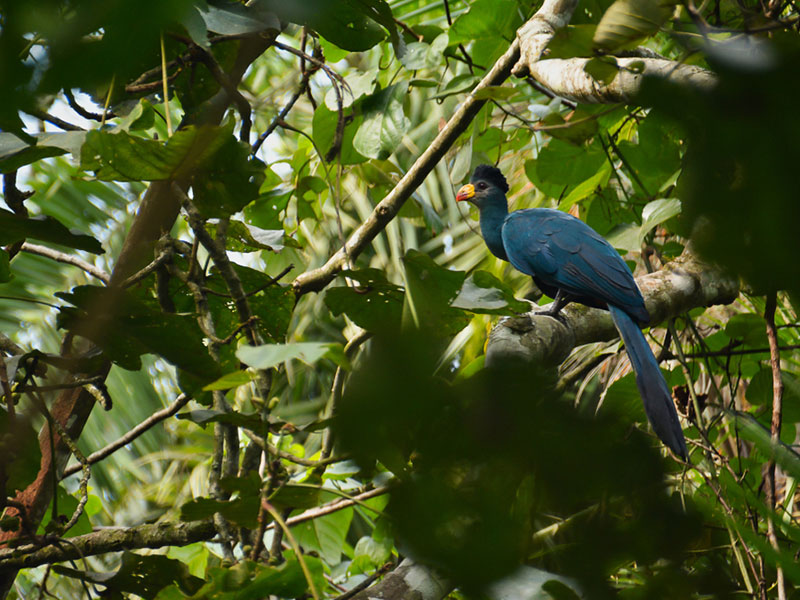PRIMATE CAPITAL OF THE WORLD
East of the Rwenzori mountain, the landscape is dotted with volcanic crater lakes and carpeted with tea plantations and tropical forest. The largest tract of forest is protected within the 795km2Kibale National Park. Established as a forest reserve in the 1940s, Kibale was upgraded to national park status in recognition of a biodiversity that includes 350 tree species, 71 species of mammal and 370 bird species. The park is best known for its primates which include Uganda’s largest population of chimpanzees – an estimated 1450 – the localized red colobus, and L’Hoest’s monkey. Other large mammals, such as elephant, buffalo and giant forest hog are present but are rarely seen.
The park’s birdlist includes six species that are endemic to the Albertine Rift region, namely black-capped apalis, collared apalis, blue-headed sunbird, dusky crims onwing, purple-breasted sunbird and red-faced woodland warbler, other’ ‘Kibale specials’ include the African pitta, green breasted pitta, black bee eater, eastern nicator, yellow rumpedtinkerbird, Kibale ground thrush, brown-breasted alethe, blue breasted kingfisher, Abyssinian ground-thrush and the crowned eagle.
There are two tourist sites in Kibale NP. The main hub is at Kanyanchu, 35km southeast of Fort Portal on a newly tarmacked road leading to Kamwenge and Ibanda. A secondary site is found at Sebitoli, 16km east of Fort Portal on the Kampala road.


ATTRACTIONS AND ACTIVITIES
Primate Walk (Chimpanzee Tracking)
The perennially popular primate walk provides the chance to observe chimpanzees in their natural habitat. Kanyanchu’s groups are accustomed to human presence – some have been observed for over 25 years – and the chance of locating them is over 90%.
Chimpanzee Habituation Experience
The Chimpanzee Habituation Experience (CHEX) enables visitors to accompany researchers and habituators into the forest. The chimpanzee groups involved are less accustomed to human presence than those isited on the Primate Walk and following and viewing them is both exciting and challenging.
Nature Walks
A Nature Walk is an opportunity to enjoy one of East Africa’s most beautiful and varied forests without pressure to locate chimpanzees or tick off a dozen ‘Kibale specials’ on the birdlist. This is an ideal activity for young visitors unable to accompany relatives on the Primate Walk.
Night Walks
Enter the forest after dark to search for nocturnal creatures such as galagos, pottos and bushbabies.
Birding
Kibale’s 372 forest, grassland and swamp species, including local endemics and Central Africa ‘specials’ makes the park a popular birding destination. Forest birds can be sought, with the help of experienced UWA guides, on the forest trails at Kanyanchu and Sebitoli tourism sites. This experience should be combined with a visit to Bigodi Wetland Sanctuary to add forest edge and swamp specials to the list. This popular, community-run attraction lies just outside the park, 5km south of Kanyanchu.
ACCESS TO THE PARK
ROAD
The main tourism hub at Kanyanchu, on the newly tarmacked Fort Portal-Ibanda road, can be reached from Kampala by a number of routes, all on surfaced roads. The most direct (335km) is via Fort Portal, 35km to the north. The park can also be reached from the south via Lyantonde and Ibanda (392km), Mbarara and Ibanda (405km) and Mbarara, Kasese and Fort Portal (525km).
AIR
Kibale National Park has access to two airstrips: Nyakisharara, near Mbarara (100km on tarmac) and Kasese (60km on surfaced and dirt roads).
